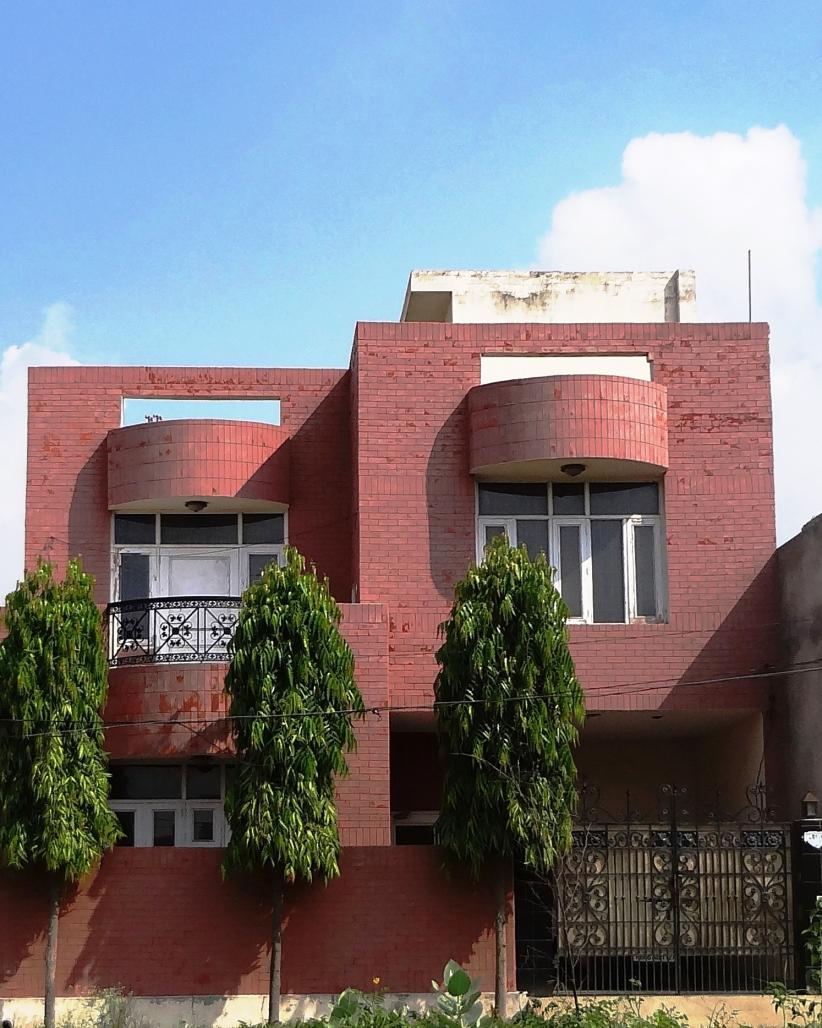Hardeep Niwas at Jalandhar is a small single-family house. The owner the house is an Electronics Engineer and a close friend of the architect. He wanted a comfortable and economical house for his small family –a wife and a daughter. The park-facing plot is small in size having an area of 1245 square feet. Keeping in view the family requirements and the size of the plot the architect decided to design a duplex house. The drawing room, living room, kitchen, toilet and porch have been kept at the ground floor level. Two bed rooms along with toilets, balconies and terraces have been kept at first floor level. A small court on the front and another at the rear helped in ensuring adequate light and ventilation in the house. At the upper level there is an open terrace on the front and a balcony at the back which are ideal places for outdoor activities in a fair weather.
A U-shaped staircase with a rectangular void has been strategically placed in the living room. This staircase links the two floors vertically and also provides access to the top terrace. The narrow void along its side acts as a wind shaft and ensures adequate cross ventilation in the house.
The external expression of the house is a bold statement in brick. The seamless, monochromatic and minimalist approach to the design makes it look bigger and distinguish from the nearby houses. In spite of its limited volume the façade is an interesting play of solids, voids, projections, recesses, verandahs, balconies and terraces. All these elements not only complement each other to make a unified whole but also help in creating mutual shades throughout the day. The patterns of shades and shadows change every moment with the direction of the sun thus making the house cool and lively place to live in.
The building is constructed in locally available brick with reinforced-cement-concrete slabs. All the internal wall surfaces are cement plastered and painted in light colour for better illumination. External surfaces are clad in terracotta tiles which give it an enduring and interesting look.
Apart from the utilitarian angle, the house is an excellent example of sustainable design / energy-efficient architecture. Natural light and ventilation are the salient features of the design. All the areas of the house get abundance of natural light and ventilation thus minimizing the dependence on artificial means. House remains exceptionally cool during seven months of the hot summers. Adequate cross-ventilation creates comfortable interiors during the two monsoon months when it is very hot and humid outside. Surprisingly it remains warm during three winter months when all operable window shutters are closed.
2002
2003










